SEC Subpoenas Faraday Future Executives
Several executives from perpetual automotive startup Faraday Future have reportedly been subpoenaed by the U.S. Securities and Exchange Commission as part of an investigation into inaccurate statements made to investors. Though, considering the nameplate’s history, it would be impossible to assume which item the SEC will be focusing on thanks to FF’s exceptionally long history of industrial misgivings.
We’ve covered Faraday Future’s long and bizarre story from the early days of delivering half-baked, though otherwise impressive, concepts to its more recent status as an automaker in the ethereal sense. It’s promised the moon and only managed to deliver a handful of production husks that never surpassed the body-in-white phase and some “production-intent” prototypes of the FF91. Though the larger story is the SEC’s sudden interest in electric vehicle startups that went public via mergers with blank check firms, better known as special purpose acquisition companies (SPACs), over the last two years.
Freedom Convoy Update: Truckers Are Winning
The Freedom Convoy that originated in Canada last month has gained an incredible amount of momentum, garnering loads of support from citizens around the world. Sympathetic protests seem to be erupting everywhere while the original group of truckers remains planted on the streets of Ottawa to demand an end to government mandates. But honking at Parliament Hill for two weeks was only a portion of the convoy’s grand strategy.
Large groups of truckers have broken off to create blockades at meaningful border crossings, gaining control of North America’s already ailing supply lines. The most recent example resulted in the taking of the Ambassador Bridge in Detroit, an essential trade crossing for both the United States and Canada. Truckers have held the bridge for five days and automakers have begun announcing shutdowns due to supply issues. Meanwhile, the Canadian government has begun discussing an end to lockdown measures after failing to stop the protests and other nations appear poised to follow in its footsteps.
Honda 'Boycotts' Facebook and Instagram
American Honda has joined a cadre of sizable brands opting to pause advertising on Facebook and Instagram in order to “stand with with people united against hate and racism.” It’s part of a broader campaign, called #StopHateforProfit, in which activists push brands to boycott social media giants until they enact stricter regulations about what constitutes actionable language that should be censored/penalized.
Over the last few days, we’ve seen numerous companies adopt the increasingly popular campaign, yet the reasons for doing so seem as varied as their individual terms and conditions. Multinational consumer goods company Unilever said it will scrap all social media advertising for the remainder of 2020 in the United States. While most attribute this primarily to hate-speech concerns, the company also noted that the contentious political climate on those platforms (including Twitter) having become undesirable for its own advertising purposes. Coca-Cola is similarly pausing social media spending for a few weeks, it’s made it clear that it’s not joining the official boycott, despite claims to the contrary in the news.
While Honda’s involvement in the movement is a little easier to follow, there are still a few twist and turns.
Should Tesla Start Advertising?
Tesla shareholders are scheduled to vote in July on whether or not the brand should start advertising product like every other automaker on the planet. It’s something the board and CEO Elon Musk have long resisted, and not without good reason. As a car brand, Tesla probably enjoys more free publicity than anyone else.
Musk has effectively mastered social media. He knows what buttons to press to earn more attention, and his one-man campaign has helped the company get where it is today more than the slickest ad copy could have hoped to.
Tesla also managed to spin this into a strength against would-be critics. Anytime someone laughs at the brand for not spending on traditional marketing, its acolytes point to the Musk talking point that cash is better used for development — a claim that holds some real weight, thanks to the brand having some of the most desirable electric vehicles on the market. But Tesla’s mystique won’t last forever, and it won’t be able to count on Elon Musk’s upper echelon Twitter game indefinitely.
GM Quietly Erases Online Ad Already Pulled From Television
In a rare victory for television, General Motors was forced to pull one of its obnoxious “Real People” ads earlier this week after Ford, Toyota, and Honda cried foul over its claims. If you missed our earlier coverage, the gist was that GM stated Chevrolet was the more dependable brand by surprising rival owners — who were definitely not paid actors — with totally reliable data…
One of the biggest problems with the spot was that the reliability-related praise heaped on Chevrolet’s vehicles was, in many cases, supported by data obtained from previous-generation vehicles. That gave the annoyed automakers solid footing to call the commercial misleading and deploy their lawyers. Earlier this month, GM’s legal team was sent a letter demanding the company stop making the reliability claims in its television campaign and was given until January 14th to respond to the demands.
General Motors ultimately responded by saying the ad had already stopped airing nationally and that it would be removed from local markets in the coming weeks. It noted that it stood by the claims. Then, earlier today, it also removed the commercial from the internet.
Lexus Lets Artificial Intelligence Write Car Commercial, Mild Weirdness Ensues
Automakers are obsessed with promoting high-tech concepts in an effort to prove to investors and the general public that they aren’t falling behind the times. While artificial intelligence remains the gold standard, what constitutes A.I. can get a little foggy. However, in the present, the term can be used to describe any machine that effectively mimics cognitive behaviors, like the ability to learn or create.
Car manufacturers want to fine tune specific A.I. examples to be implemented in autonomous driving hardware and high-end, modern infotainment systems. For example Mercedes-Benz wants to use the technology to build a more serious relationship between drivers and its cars by allowing future vehicles to “learn” about the driver. Meanwhile, General Motors decided to branch out to see how such a system would handle marketing by linking up OnStar Go with IBM’s Watson, an A.I. which famously beat Jeopardy champion Ken Jennings.
Watson is now working with Lexus and taking things a step further. The automaker just released a new advertisement it claims was written by IBM’s machine and directed by Kevin Macdonald.
Opening Pandora's Box: GM Tracking Consumer Listening Behavior in Cars
General Motors has begun surveying how its drivers experience in-car multimedia, specifically the radio, as part of its new strategy to track customer habits and maximize the profitability of information. With 4G LTE WiFi connectivity now featured inside millions of GM vehicles, the automaker believes technology can be used to fine tune its future marketing strategies.
While an invaluable insight tool for advertisers, it’s also the perfect example of the kind of thing we’ve been complaining about for the last couple of years. General Motors is leaning into Big Data as hard as possible, meaning your personal information could soon be on the line — if it isn’t already.
The Show's Over for Four-door Ford Car Advertising
With Ford Motor Company dropping all but one car from its lineup to focus on utility vehicles and crossovers, there’s little reason to run ad campaigns for both. You don’t see Coca-Cola running spots for both Diet Coke and Coke BlāK, as the latter of the two beverages disappeared from store shelves roughly a decade ago. Companies don’t bother pushing products they don’t have, and pretty soon Ford won’t have cars.
Thus, the automaker has ended all nationwide marketing for the Fiesta, Focus, Taurus, and Fusion. Mark LaNeve, Ford’s vice president of U.S. marketing, sales and service, said the automaker intends to use the freed advertising dollars on the company’s current and forthcoming utility models — setting aside a portion for the Mustang. But the Fusion, which is slated to stick around for another two years, will have to go without.
BMW's M2 Competition Ad Campaign Is Completely Ridiculous
You aren’t going to see a lot of televised commercials for the BMW M2 Competition, as it’s an enthusiast car of the highest magnitude. A thirty-second spot in the middle of a popular sitcom doesn’t provide adequate time to run through a laundry list of performance specs for car nerds, and the blanketed marketing approach wouldn’t really be cost-effective, anyway. BMW needs a surgical strike, something viral that can be passed around the internet between the sort of people that actually might consider owning an M2.
That’s what makes its new marketing campaign for the model so good. Outside of offering the most fun you can have inside a car while wearing pants, the M2 isn’t setting any automotive records. It is, however, taking a stab at world records set by humans. Earlier this month, the automaker hooked up a laser to the front of the vehicle to see how many balloons it could pop in a single minute. A week later, it released another video in which it attempted to cut down 116 straw poles with a samurai sword.
We don’t need to tell you that attaching lasers and swords to a car’s exterior is very awesome. And it’s that feeling — like the whole ad campaign was dreamed up by an eight-year-old — that makes for an appealing gimmick.
Honda's New Insight Ad Doesn't Make Sense
Honda has launched a new media campaign for the Insight, a model that stages its third reappearance for the 2019 model year. The media push frames other hybrids as ugly, boring vehicles you have to settle for in order to gain superior fuel economy. There’s a social media initiative that transforms everyday objects into something more interesting and a television spot where other vehicles mill around while covered in bubble letters that spell out “blah” or “meh,” with horns and engine noises to match.
But the whole ad seems counterintuitive. The Insight ditched its funky wheel coverings after the first generation, which was followed by the loss of the glass-back hatch. Now it’s a pretty normal looking vehicle. You might even mistake it for a miniature Honda Accord.
That’s not an insult; the Accord isn’t a bad looking vehicle, but it also blends in easily with traffic. A large part of that is due to its popularity, but it still calls into question the whole premise of the ad — which serves to portray other hybrids as mundane.
Mercedes' Super Bowl Phone Game Sacked Over Technical Difficulties
Automotive advertising and the Super Bowl are intrinsically linked. Car spots populate the commercial breaks, the most valuable player gets a free truck, and there is usually a contest or two sponsored by a major manufacturer. This year, Mercedes-Benz had a rather clever idea: to create a digital version of the hand-on game where the last participant to break physical contact with a vehicle (usually a Hyundai) gets to take it home.
Scheduled to coincide with kick-off, contestants would keep their fingers planted on their phones for the duration of the game for the chance to win a brand new Mercedes-AMG C43. The last person to allow their digit to stray from the moving photo would be awarded the car. But there was a problem — too many people tried to play the Mercedes-Benz Last Fan Standing game and it immediately crashed.
Aston Martin Now Sells Idiotic Tom Brady 'Signature Edition' Vanquish
I’ve already made the case against Aston Martin using Tom Brady as a brand ambassador. However, after months of marinating in a pool of semi-rational anger, I came to the realization that not everyone would view it as a step down from James Bond.
Brady was chosen specifically to appeal to the United States because Aston wants to bolster sales in North America. His eerily straight teeth and All American Good Looks™ were a marketing selection, albeit an incredibly boring one.
While I prattle on endlessly about how unsettling I find the man, what I find particularly bothersome is that we’re supposed to presume Brady is an automotive enthusiast and ambassador of good taste. However, I’ve never seen him doing guest spots on motoring shows and his penchant for the finer things appears to be nothing more than a byproduct of his being successful. So, when Aston announced the $360,000 car he spent five months helping design was finished, my eyes rolled so far back into my head that it induced a nose bleed and I subsequently passed out.
Subaru Believes Dog-focused Advertising Has Been a Large Part of Its Success
Automotive advertising has always been an amalgamation of information and hype. Carmakers use commercials to inform the public of what makes their model different and new, while simultaneously promising an intangible goodness. Mid-century ads were less specific, reassuring prospective customers of a nondescript better way of life, but modern marketing has become much more focused. If ads are to be believed, buying a car today means purchasing more than just the hardware its comprised of — you’re buying an identity.
I’m reminded of a collection of car commercials from the 1960s that essentially vowed to nerds that, if they bought a specific car, they would be pursued endlessly by attractive women. It was a bold and extremely unsubtle way to kick off the new trend.
We’ve come a long way evolved slightly since then, but the concept of identity-focused advertising is more popular than ever. In fact, Subaru attributes a large portion of its own success to marketing that closely associates the brand with good values, family, lovable mutts, and the great outdoors.
The Prestige: Airport Replaces Handicap Parking With 'Lexus-only' Spaces
We’re all familiar with the concept of executive parking spaces, and surely most of us know someone with a sign hanging in their garage that reads “Mopar Parking Only.” Both are annoying concepts highlighting one person’s perceived superiority over another but without any real consequences. After all, it’s not as if they’re stealing someone else’s space.
Thinking it might be a good idea to combine these two scenarios as part of a marketing ploy, Lexus teamed up with the Calgary Airport Authority to convert five primo parking spots into branded spaces. However, the locations they ended up replacing were designed for handicapped patrons. While that understandably didn’t go over well with travelers, you have to admit there is a certain level of prestige associated with displacing people who actually need something just because you want it for yourself.
IIHS: Not All Ford F-150s Are Built Just As Tough
Automotive News is reporting the Insurance Institute for Highway Safety will rate versions of Ford’s F-150 pickup with dramatically different safety ratings after re-testing versions of the pickup, which is a highly unusual move for the safety nonprofit.
The SuperCrew cab version of the F-150 earned the highest marks from the IIHS in its small overlap crash test, earning a Top Safety Pick rating. The re-tested SuperCab registers only a “marginal” rating in the same crash.
The difference, according to Automotive News, are tubular frames called “wheel blockers” installed on the SuperCrew, but missing from the SuperCab and Regular Cab models.
Project CARS, Just Like Many Real Cars, Can't Match The Media Hype
Project CARS is probably the most hotly-anticipated automobile-related video game to “drop” in the past few years. It’s ridden a positively Kanagawan wave of media hype and compensated “viral” marketing to its release – but at least one well-informed source is saying that this new emperor is decidedly trouserless.
GM Will Set Base Curb Weight For Its Truck Lineup
The next time you visit a Chevrolet or GMC showroom to check out a full-size or mid-size pickup, you may find the truck’s curb weight to be heavier than once advertised. That’s because General Motors has decided it will no longer remove items to make payload.
Emissions Analytics Challenges EPA Over Fuel Economy Rating Methodology
As fuel economy figures from the Environmental Protection Agency have been put under the gun for being heavily inaccurate in a few cases, a third-party testing company is offering the public real-world mileage numbers for comparison.
White House Denies Delaying Chevrolet Volt Fire Announcement
Obama! Socialism! Taxes! Jesus! Faith! Guns! Now that you’re paying attention, it’s time for our regularly scheduled programming. A Detroit News article claims that NHTSA is denying any interference on the part of the White House with respect to the Chevrolet Volt fires that resulted from government crash test procedures.
Truth Versus Advertising: "Cars With Bows On Them" Ads Must Die
We’ve been a bit critical of Honda’s advertising recently, and though I’m not a big fan of most of the latest David Puddy (OK, OK, Patrick Warburton) spots, I have to give it up for this one. I’ve wondered about the “cars with bows” ad meme for some time now, and though it was estimated that some 50,000+ vehicles were given as gifts last holiday season, I really can’t wait for the ad theme to die. We all love surprise gifts (especially expensive ones), but shouldn’t the person who will actually be driving the car have some say in what they get? I mean, I’d be grateful if someone bought me a new Lexus RX (a chief perpetrator of this ad meme) out of the blue… but mostly in the “it’s the thought that counts” way. Want to surprise someone with something expensive? Buy them jewelry or a watch. Want to buy someone a car? Make sure you really know exactly what car the giftee wants, and for goodness sake, make sure they drive it and the competition first. Surprises last a few seconds, the right car will delight for years to come.
Truth Versus Advertising: A Ferrari In The Rear-View Mirror Of An STS Edition
This Cadillac ad is the latest in a series of seriously good spots for the CTS-V, which started with this “Competition” ad from last Summer. But then, as I found in a short drive, the CTS-V writes its own ad copy, 556 HP at a time. And this latest spot has one minor truth-related omission: though GM rightly claims that Magneride Magnetorheological suspension was “perfected” in the CTS-V, it actually debuted in the less ad-dollar-worthy 2002 STS. And there’s no mention of the fact that the technology was developed by Delphi, then a technically independent firm, and the technology has since been sold to Beijing West Industries. Of course, these details aren’t exactly worthy of the limited time available in a 60-second spot, but it’s the truth, dammit. “Just sayin…”
Truth Versus Advertising: It's A Safety Feature!
When Mercedes featured hooded death in an ad for its Brake Assistance System, our own European automotive advertising veteran, Bertel Schmitt, wrote
never in my life would I have expected to see the grim reaper in a car ad. Especially not in the death seat. Especially not in a Mercedes ad. The boys from Sindelfingen never were known for their daredevil approach to advertising. Even at Volkswagen, which used to take more risk in their campaigns (
Of course, most Americans wouldn’t bat an eye at an ad featuring death… from politics to sales, our culture is built on scaring people into buying/accepting things. But this Dutch ad for the Hyundai Veloster, which was apparently approved and then banned, would have caused a few quizzical looks in any country. Not because it features death incarnate, but because advertising the Veloster’s freaky three-door layout as a safety feature is just that absurd. This ad should never have seen the light of day for the simple reason that it’s an old-school and utterly conventional approach (by banned-ad standards, anyway) to marketing one of the few cars on the market that is willfully and unnecessarily unique, simply for the sake of being unique. Surely, in this age of appliance-like cars, conventional styling and unadventurous product planning, uniqueness is enough of a marketing hook on its own…
Truth Versus Advertising: Dodge's "Long Lost Performance" Edition
Despite signs that the horsepower wars are over (or have at least been refined), nobody would argue that the American market lacks for high-powered offerings. Except, apparently, Dodge and its crack ad team at Wieden + Kennedy who have based the latest Durango ad around the idea that performance is dead in America. This canard is so preposterously misguided and thoroughly misinformed that I can’t even bring myself to lay out the all-to-obvious critique piece-by-piece. Instead, let’s turn to the legendary auto ad-blaster, the Autoextremist himself to point out why this may well be one of the most stupid car ads in a long time.
Truth Versus Advertising: The Dark Side Of The Force Edition
Every advertiser faces a basic choice at the outset of a campaign: come up with unique, relatable imagery for ads, or riff on an established cultural meme. Volkswagen went the latter route with its “Darth Vader” Super Bowl ad, achieving huge success: it was the most popular auto-related ad of the Super Bowl, and the Youtube version has received over 40 million views. The only problem with appropriating such popular imagery: you don’t enjoy unique rights to it, meaning you can be easily hoisted by your own petard. Which is exactly what’s happened here to Volkswagen. Greenpeace is angry that VW opposed a bid to bump the EU’s 2020 emissions goal from the agreed-upon 20% to 30% of 1990 levels (even though C02 emissions improved 3.7% last year and 5.1% in 2009, and average emissions are on track to hit the 130g/km 2015 goal ahead of schedule). As a result, they’ve turned VW’s hugely popular “Darth Vader” ad on its head, identifying the giant automaker with the evil Lord Vader, and encouraging fans to “join the rebellion.”
Truth Versus Advertising: Even Volkswagen Gets The Blues
This new Volkswagen ad is the first global thrust of the firm’s latest ad campaign, which centers around the concept of environmental friendliness, and the tagline “Think Blue.” The ad is nothing special in itself, other than being somewhat hypnotic in its cross-cultural depiction of changing environmental consciousness, but the blue-is-the-new-green campaign as a whole is more than a little confusing for a number of reasons.
Truth Versus Advertising: The Stereotype Game
Honda’s latest Civic may not have made a great impression on TTAC’s Best and Brightest, but the new compact isn’t targeting any one buyer anyway. As theinspirationroom.com reports [click through for new ad videos], Honda’s new Civic campaign is all about broadening the model’s appeal… to five specific stereotypes.
The campaign features five distinct characters, each representing a different model. The Urban Woodsman, Jack, lives in the city but is at home in the woods. He likes his Hybrid for its great fuel efficiency, which comes in handy on his many trips to the great outdoors. The Zombie, Mitch, is a salesman who’s into high-tech gadgets. His Civic Sedan is loaded with options like Bluetooth HandsFreeLink and navigation system with FM Traffic. The Monster, Teeny, is a bubbly and studious college coed. Her practical nature and frugal budget align with the fuel-efficient HF model. The Ninja, Aiko, is cute, innocent and deadly. A martial-arts phenom who’s partial to red licorice and arcade games, she pairs well with the high-energy performance of the Si model. Cesar, the Champion Luchador, is somewhat of a celebrity. He’s handsome, charming and a bit vain so he, of course, appreciates the Civic Coupe’s sleek lines.
Of course, Honda never needed this kind of segmentation silliness (which reeks of the “brand central studios” that Bob Lutz rips in his new book) in order to make its Civic one of the best-selling nameplates in the US market. Meanwhile, the requisite price of this kind of “personality profiling” is that the mass market “profile” (i.e. the people who buy the majority of Civics) gets a short shrift compared to the smaller but sexier niche profiles. As a result, Honda signals that it sees the bulk of Civic buyers as “zombies,” with no distinguishing characteristics besides a vague affinity for tech toys. Compare this to the legendary tagline “you meet the nicest people on a Honda,” and you’ll begin to get a sense of how far Honda’s marketing has fallen in recent years…
Mazda's Enthusiast Howl
Hey you, you’re an “auto enthusiast,” right? You care about the “driving experience, yes”? Good, name a top-20 global automaker that sells one brand of cars globally, marketed specifically to enthusiasts.
Take your time answering, but there’s only one… and it has something very serious to say to you.
Dropped Jaws At The Nordschleife: BMW Introduces The World's Fastest Truck
A truck at the Nordschleife? No, no service truck. One that does some 190 mph. Possibly more. A truck made by BMW. In a press release, BMW dubs it “the world’s fastest pickup.” If they say so. One needs to be very careful with these statements in Germany, lest someone will sue you faster than the truck completes the Nordschleife lap.
Truth Versus Advertising: Be Careful What You Compare With
One of the recent advertising trends we’ve seen is the comparison of a new car with something ridiculous… like an armored car or a sofa. Now, Nissan is inverting the “shooting sofas in a barrel” approach by taking on one of the toughest comparisons imaginable: making readers decide between a Juke and a swimsuit model. Here, the Juke and a model from Sports Illustrated’s Swimsuit Edition go head-to-head in a “curb appeal” competition… up next, “headlights,” “airbags” and “ride quality.” Then, testers will strap on their crash helmets and try to determine which model “slides its rear end out” in the most satisfying manner… plus whatever other dirty double-entendres you can come up with. Just the thing to get you into that romantic Valentine’s Day mood…








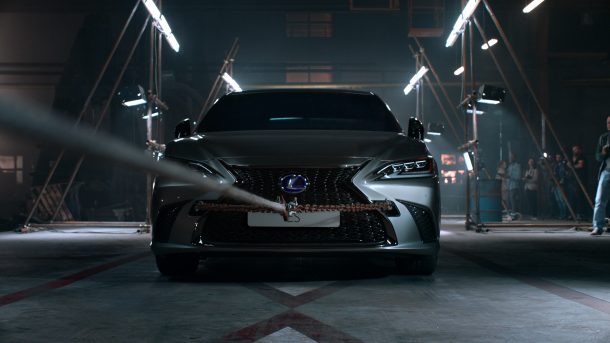
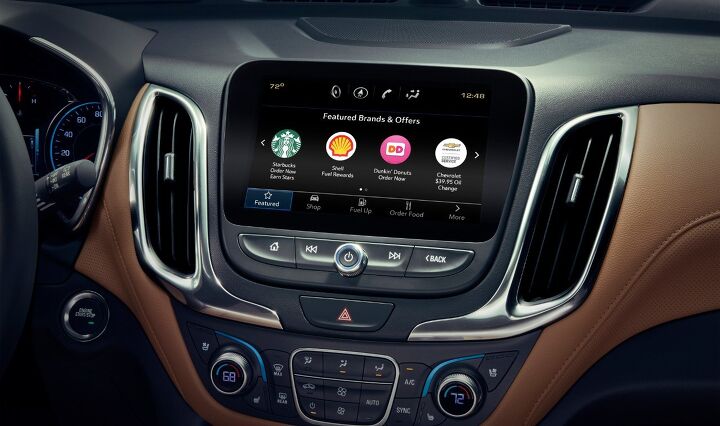


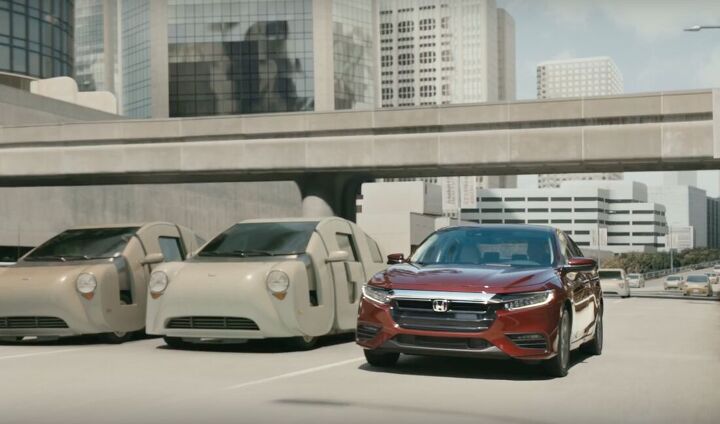

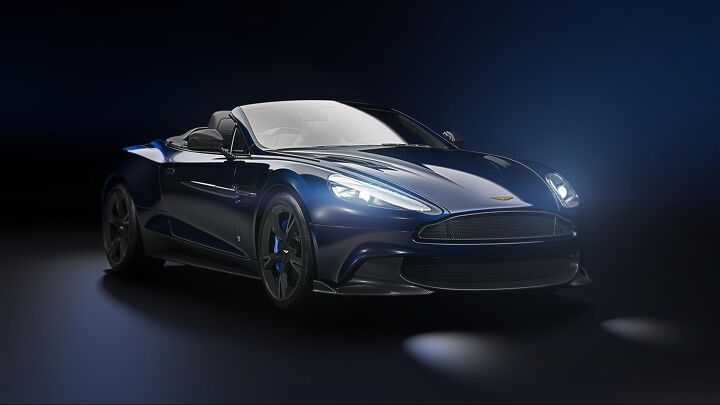

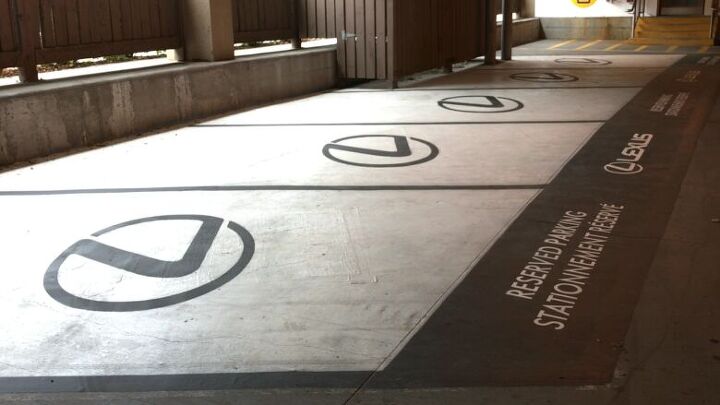
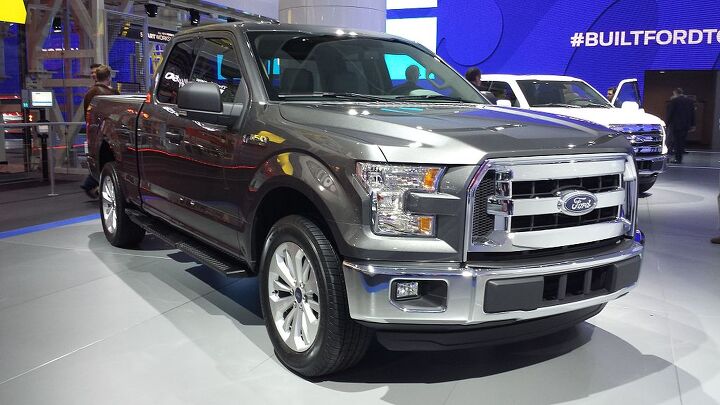
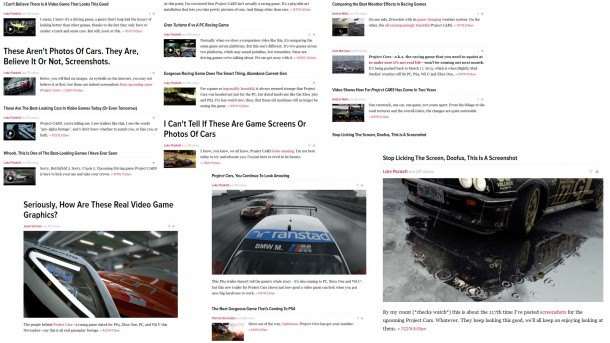


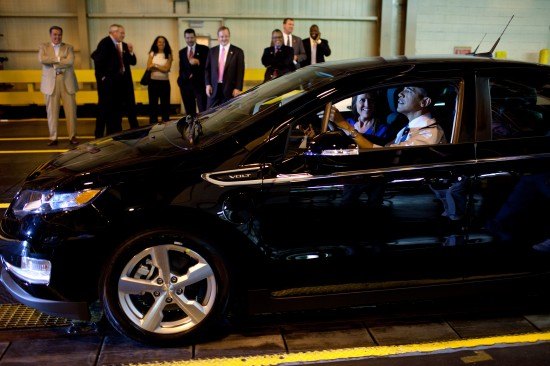


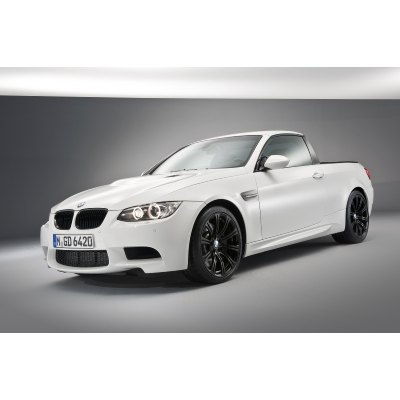












Recent Comments